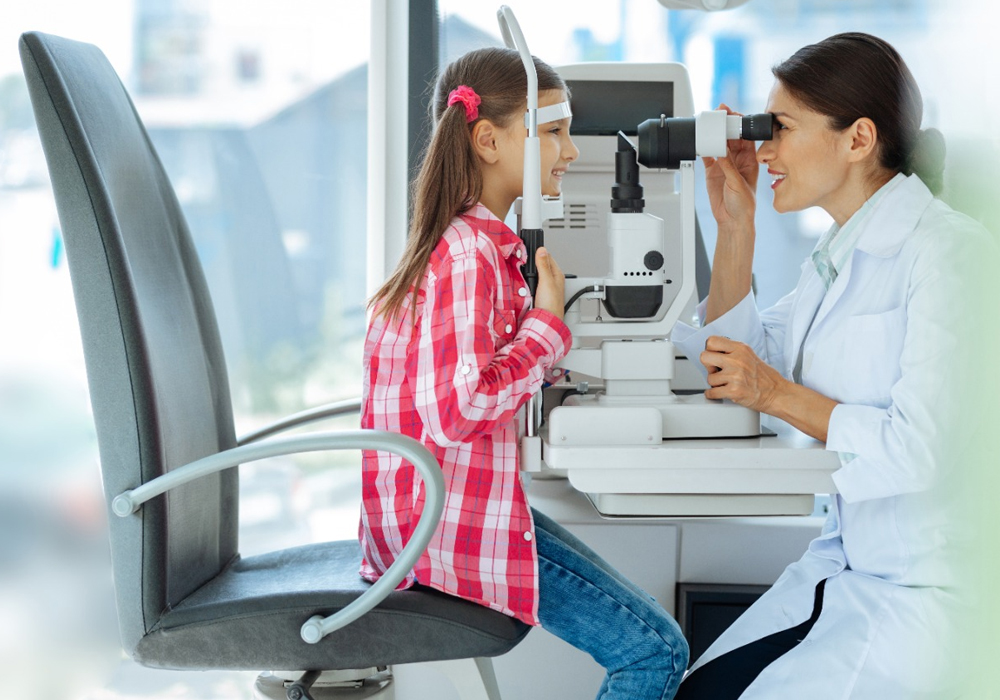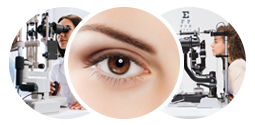Paediatric Eye Diseases: Symptoms, Diagnosis & Treatments
Visual development in children follows a series of milestones that are crucial for proper eye function and coordination. At birth, an infant’s vision is blurry, but by 3 to 4 months, they begin to track objects and focus on faces. Depth perception and eye-hand coordination develop by 6 months, and by preschool age, children should have well-developed visual acuity. Any disruptions in this developmental process can lead to conditions like amblyopia, where one eye becomes weaker due to lack of use. Early intervention is essential to correct such issues, as the brain's plasticity allows for effective treatment in the early years, but delays can result in permanent vision impairment. Regular eye screenings and prompt attention to any visual concerns ensure that potential problems are identified and managed early.
Common Paediatric Eye Diseases
1. Amblyopia (Lazy Eye)
- A condition where vision in one eye is weaker because the brain and eye are not working together properly.
- Symptoms: Poor depth perception, squinting, head tilting, or one eye wandering.
- Diagnosis: Comprehensive eye exam, visual acuity test, and cover test.
- Treatment: Patching the stronger eye, atropine eye drops, corrective glasses, or vision therapy. Early intervention is key, as untreated amblyopia can lead to permanent vision loss.
2. Strabismus (Crossed Eyes)
-
A condition where the eyes do not align properly, leading to one eye looking in a different direction.
-
Symptoms: Misaligned eyes, double vision, tilting the head, or difficulty focusing.
-
Diagnosis: Eye movement tests, cover tests, and visual acuity assessment.
-
Treatment: Glasses, eye exercises, patching therapy, or surgery for severe cases. Strabismus can impact a child's depth perception and self-esteem, making early treatment essential.
3. Congenital Cataracts
-
Clouding of the lens present at birth, which can impair vision.
-
Symptoms: Cloudy or blurry vision, poor visual response, or difficulty tracking objects.
-
Diagnosis: Eye exam using a slit-lamp microscope and red reflex test.
-
Treatment: Surgery to remove the cataract, followed by corrective lenses or intraocular lens implants. If left untreated, congenital cataracts can lead to amblyopia or permanent vision impairment.
4. Refractive Errors (Myopia, Hyperopia, Astigmatism)
During a routine eye examination, an optometrist or ophthalmologist will perform several tests to assess your vision and eye health. These may include:
-
Conditions that affect how light is focused on the retina, leading to blurred vision.
-
Symptoms: Squinting, headaches, difficulty reading or seeing distant objects.
-
Diagnosis: Visual acuity test and refraction test.
-
Treatment: Prescription glasses or contact lenses. In some cases, orthokeratology (specialized contact lenses) may be used to slow myopia progression in children.
5. Retinopathy of Prematurity (ROP)
During a routine eye examination, an optometrist or ophthalmologist will perform several tests to assess your vision and eye health. These may include:
-
A condition affecting premature infants, causing abnormal blood vessel growth in the retina.
-
Symptoms: Often detected through screening in premature babies, can lead to vision loss if untreated.
-
Diagnosis: Dilated eye exam and retinal imaging.
-
Treatment: : Laser therapy, anti-VEGF injections, or surgery in advanced cases. Regular follow-ups are essential for premature infants to monitor retinal development.
6. Paediatric Glaucoma
During a routine eye examination, an optometrist or ophthalmologist will perform several tests to assess your vision and eye health. These may include:
-
A rare but serious condition that causes increased pressure inside the eye, leading to optic nerve damage.
-
Symptoms: Excessive tearing, light sensitivity, enlarged eyes, and vision loss.
-
Diagnosis: Tonometry (measuring eye pressure), optic nerve evaluation, and visual field tests.
-
Treatment: Medications, laser therapy, or surgery to reduce intraocular pressure and prevent vision loss.
7. Allergic Conjunctivitis
During a routine eye examination, an optometrist or ophthalmologist will perform several tests to assess your vision and eye health. These may include:
-
An allergic reaction that causes inflammation of the conjunctiva (the clear tissue covering the white part of the eye).
-
Symptoms: Red, itchy, watery eyes, swollen eyelids, and excessive tearing.
-
Diagnosis: Clinical examination and evaluation of allergy history.
-
Treatment: Avoiding allergens, antihistamine eye drops, artificial tears, and in severe cases, steroid eye drops. Keeping the child's environment allergen-free can help prevent flare-ups.
Diagnosis of Paediatric Eye Diseases
Early diagnosis is essential to prevent vision loss and developmental delays. Pediatric ophthalmologists use various tests to assess eye health, including:
-
Visual acuity tests : (Using charts or picture-based tests for younger children)
-
Eye alignment tests: (Cover tests and Hirschberg test)
-
Retinal and slit-lamp examination: to check for abnormalities.
-
Imaging techniques such as Optical Coherence Tomography (OCT) for detailed retinal assessment
-
Tonometry to measure intraocular pressure for detecting glaucoma
Treatment Approaches
Treatment varies based on the condition but generally includes:
-
Corrective Lenses : Glasses or contact lenses for refractive errors
-
Patching Therapy: Used for amblyopia to strengthen the weaker eye.
-
Medications: Eye drops such as atropine to blur vision in the stronger eye.
-
Surgical Interventions: Used for strabismus, congenital cataracts, glaucoma, or severe ROP.
-
Vision Therapy: Exercises and training programs to improve visual skills
-
Laser Therapy: Used for conditions such as ROP and pediatric glaucoma to manage abnormal blood vessels and intraocular pressure.
-
Orthokeratology (Ortho-K): Specially designed contact lenses that temporarily reshape the cornea to manage myopia in children.
-
Antihistamines and Lubricating Drops: Used for allergic conjunctivitis to relieve symptoms and prevent irritation.
Prevention and Eye Care Tips
-
Regular eye screenings : starting from infancy.
-
Protecting children’s eyes : from excessive screen time by following the 20-20-20 rule (taking a break every 20 minutes, looking at something 20 feet away for at least 20 seconds).
-
Encouraging outdoor activities: to reduce myopia risk.
-
Using protective eyewear : during sports or outdoor activities to prevent injuries.
-
Maintaining a healthy diet: rich in vitamin A, omega-3 fatty acids, and antioxidants to support eye health.
-
Monitoring for signs of vision problems, such as frequent eye rubbing, squinting, or complaints of headaches.
-
Minimizing allergen exposure to prevent allergic conjunctivitis flare-ups.
Conclusion
Paediatric eye diseases, if left untreated, can lead to permanent vision problems and developmental delays. Early detection through regular eye exams, prompt diagnosis, and appropriate treatment can help children achieve optimal eye health and development. Parents should be vigilant about their child’s vision and seek professional eye care when necessary. Raising awareness about pediatric eye health can ensure that children receive timely and effective treatment, leading to better vision and quality of life.


